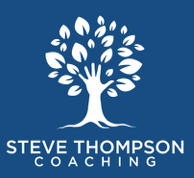In today’s rapidly evolving business landscape, fostering leadership and building a growth culture are essential for organizations to thrive and maintain a competitive edge. This article explores the key components of creating an environment that nurtures leadership development and promotes continuous growth. By understanding the pillars of a growth culture, developing leaders through ongoing learning, and implementing strategies for sustainable growth, organizations can cultivate a workforce that is adaptable, innovative, and poised for long-term success.
Understanding the Pillars of a Growth Culture
A growth culture is built on several fundamental pillars that create an environment that supports continuous improvement and leadership development. The first pillar is a shared vision and purpose that aligns all members of the organization towards common goals. This shared vision provides direction and motivation, inspiring individuals to contribute their best efforts towards collective success.
The second pillar is psychological safety, which allows employees to take risks, voice their opinions, and learn from mistakes without fear of retribution. In a psychologically safe environment, team members feel comfortable sharing ideas, giving and receiving feedback, and challenging the status quo, all of which are crucial for fostering innovation and growth. The foundation of psychological safety is creating a culture of trust.
Open communication and transparency form the third pillar of a growth culture. When information flows freely throughout the organization, employees are better equipped to make informed decisions, understand the broader context of their work, and identify opportunities for improvement. This transparency also builds trust and encourages collaboration across different levels and departments.
The fourth pillar is a commitment to continuous learning and development. Organizations that prioritize ongoing education and skill-building create an atmosphere where employees are encouraged to expand their knowledge, acquire new competencies, and stay ahead of industry trends. This focus on learning not only benefits individual employees but also enhances the organization’s overall capabilities and adaptability.
Developing Leaders Through Continuous Learning
Leadership development is a critical component of building a growth culture. Organizations must invest in comprehensive programs that nurture leadership skills at all levels. These programs should focus on both hard and soft skills, including strategic thinking, emotional intelligence, communication, and decision-making abilities.
One effective approach to leadership development is the implementation of mentorship and coaching programs. By pairing experienced leaders with emerging talent, organizations can facilitate knowledge transfer, provide personalized guidance, and accelerate the growth of future leaders. These relationships also help to reinforce the organization’s values and culture.
Experiential learning opportunities, such as stretch assignments and cross-functional projects, are invaluable for developing leadership capabilities. By exposing employees to new challenges and diverse perspectives, organizations can cultivate adaptability, problem-solving skills, and a broader understanding of the business. These experiences also help identify high-potential individuals who may be ready for more significant leadership roles.
Continuous feedback and performance evaluation are essential for leadership development. Regular check-ins, 360-degree feedback, and self-reflection exercises provide leaders with insights into their strengths and areas for improvement. This ongoing assessment process ensures that leadership development remains aligned with individual and organizational needs, promoting continuous growth and adaptation.
Implementing Strategies for Sustainable Growth
To build a sustainable growth culture, organizations must implement strategies that reinforce and support the desired behaviors and mindsets. One such strategy is to align reward and recognition systems with growth-oriented behaviors. By acknowledging and incentivizing continuous learning, innovation, and collaboration, organizations can motivate employees to actively contribute to the growth culture.
Creating an environment that supports ongoing development is another crucial strategy. This may include providing access to online learning platforms, organizing internal knowledge-sharing sessions, and encouraging participation in industry conferences and workshops. By making learning resources readily available and promoting their use, organizations can foster a culture of continuous improvement.
Embracing failure as a learning opportunity is essential for sustainable growth. Organizations should encourage calculated risk-taking and create processes for analyzing and learning from failures. This approach helps to build resilience, promotes innovation, and reinforces the idea that growth often comes from stepping outside of comfort zones.
Finally, organizations must regularly assess and evolve their growth strategies to ensure they remain effective and relevant. This may involve conducting culture surveys, analyzing key performance indicators, and soliciting feedback from employees at all levels. By staying attuned to the changing needs of the workforce and the industry, organizations can refine their approach to fostering leadership and maintaining a vibrant growth culture.
Fostering leadership and building a growth culture are ongoing processes that require commitment, investment, and continuous refinement. By understanding the pillars of a growth culture, developing leaders through continuous learning, and implementing strategies for sustainable growth, organizations can create an environment where innovation thrives, employees are engaged, and leadership potential is maximized. As businesses navigate an increasingly complex and competitive landscape, those that prioritize leadership development and cultivate a growth mindset will be best positioned to adapt, evolve, and succeed in the long term.
